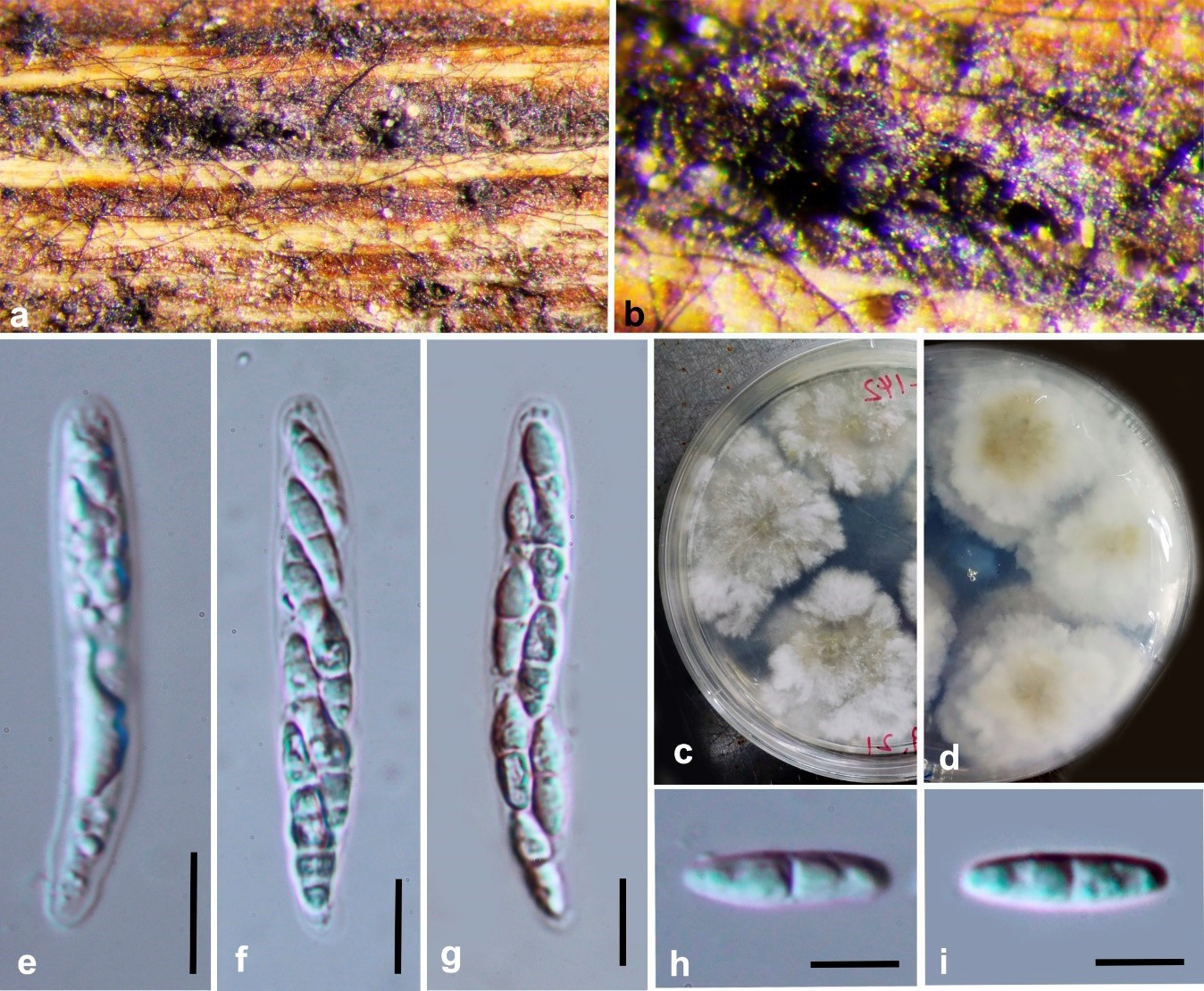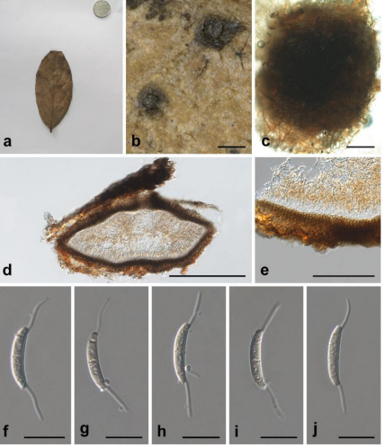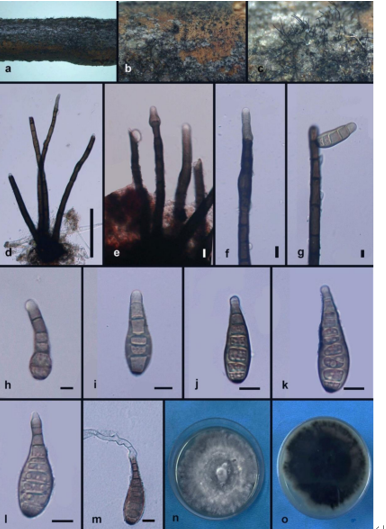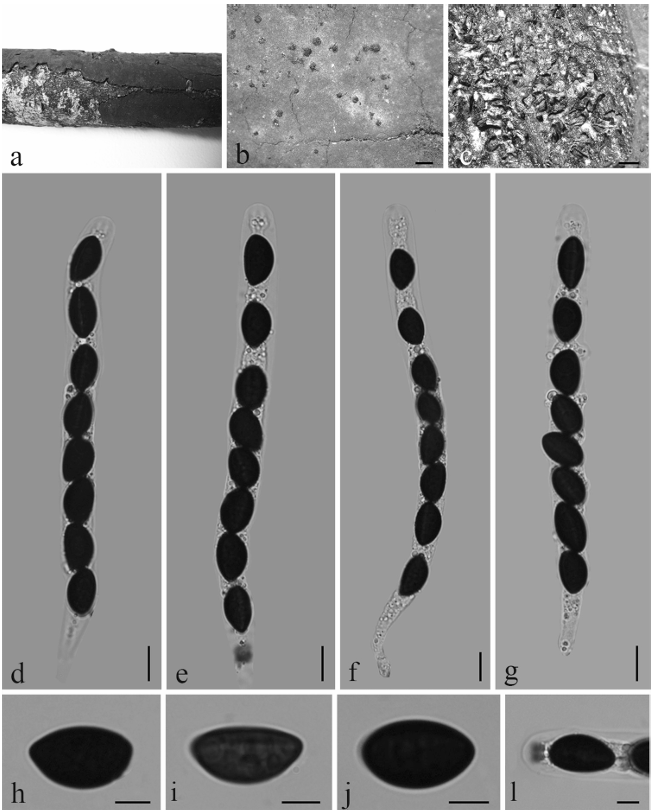Diaporthe irregularis Y.Y. Chen, A.J. Dissanayake and Jian K. Liu sp. nov. 2020
Index Fungorum number: IF557391; Facesoffungi Number: FoF07856; MycoBank Number: MB836213
Holotype: China, Guizhou Province, Suiyang broad water nature reserve, saprobic on decaying branch, April 2018. Y.Y. Chen (HKAS 107537, holotype), ex-type living culture CGMCC 3.20092 = GZCC 19-0147; ibid., (GZAAS 19-2064, paratype), living culture GZCC 19-0344; ibid., GZAAS 19-2069, living culture GZCC 19-0362; ibid., GZAAS19-2077, living culture GZCC 19-0352.
Morphological description
Saprobic on decaying woody branch. Sexual morph: Ascomata 390–460 µm diam, black, globose to irregular, scattered evenly on dead branches, immersed in host tissue. Asci 52–66 × 7–9 µm (x = 58 × 8, n = 30), 8-spored, unitunicate, sessile, elongate to clavate. Ascospores (10–12 × 3–4 µm (x = 11 × 3.5, n = 50), hyaline, two-celled, often 4-guttulate, with larger guttules at center and smaller ones at ends, elongated to elliptical. Asexual morph: Not observed.Culture characteristics: Colonies covering entire PDA Petri dishes after 10 d at 25 ◦C producing abundant white aerial mycelium, reverse fuscous black.
Habitat: on decaying branch
Distribution: China
GenBank Accession:
Notes: Four isolates, representing Diaporthe irregularis, are retrieved in a well-supported clade(ML/MP/BI = 100/100/1.0) and appear to be distinct from other Diaporthe species phylogenetically (Figure 1). Since this species does not closely related to any particular Diaporthe species, we were unable to compare the nucleotide differences in the concatenated alignment. In addition, Diaporthe irregularis can be morphologically distinguished from other Diaporthe species based on the shape and the position of the ascomata.
Reference: Asha J. Dissanayake, Ya-Ya Chen and Jian-Kui (Jack) Liu
Diaporthe irregularis (HKAS 107537, holotype). (a,b) Ascomata on host surface. (c) 10 days old culture on PDA from above. (d) 10 days old culture on PDA from reverse. (e) Immature ascus. (f,g) Mature asci. (h,i) Ascospores. Scale bars: (e–g) = 10 µm, (h,i) = 5 µm.









